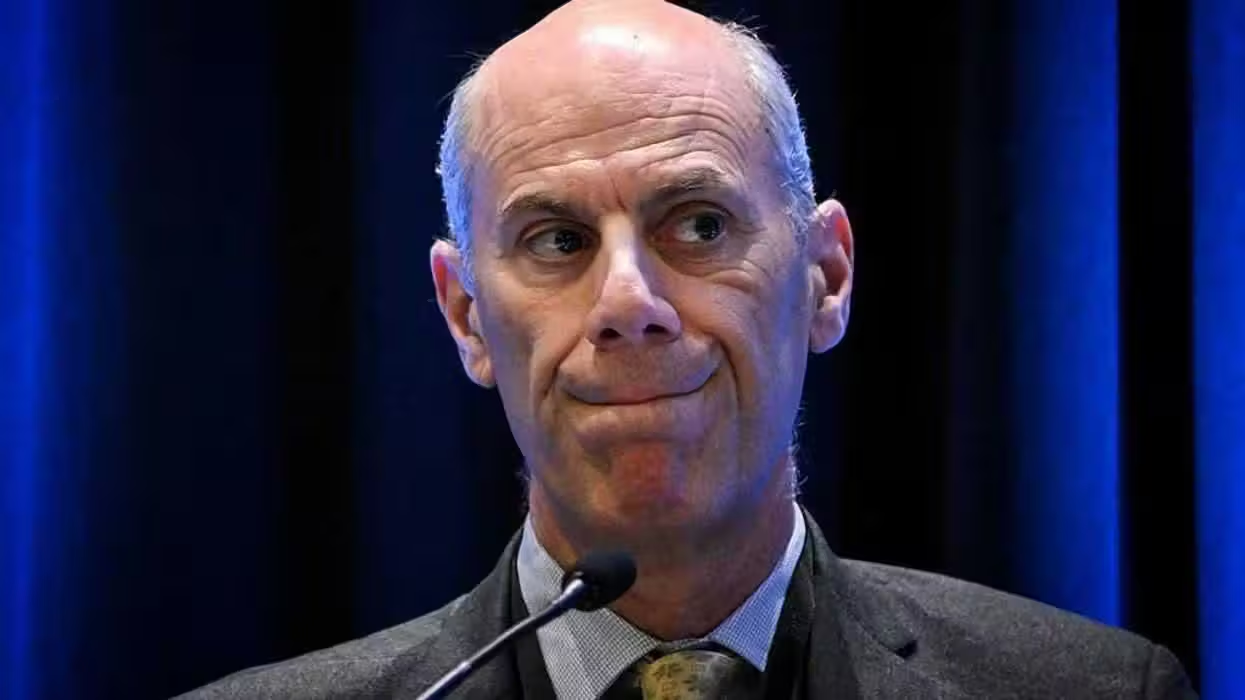
© 2025 Blaze Media LLC. All rights reserved.
"These large (bison) removals ... are a black mark on everybody."
BILLINGS, Mont. (The Blaze/AP) -- As many as 360 migrating wild bison would be shot by hunters in Montana, captured for slaughter or shipped elsewhere this winter under a proposal from Yellowstone National Park officials seeking an alternative to the indiscriminate slaughters of years past.
Documents obtained by The Associated Press show officials are considering "selective culls" to help reduce the park's bison population from 3,700 animals to about 3,000. Some of this winter's anticipated decrease would come from natural deaths.
 Park biologists wrote in the proposal that reducing the population could avoid the need for the large-scale slaughters -- more than 1,700 were killed or removed in 2008 -- seen during past migrations. In harsh winters, bison leave the park in large numbers seeking food at lower elevations in Montana. But, in milder winters, less bison leave the park, meaning for this proposal to work, the park would need to be opened to hunters in area where the bison roam.
Park biologists wrote in the proposal that reducing the population could avoid the need for the large-scale slaughters -- more than 1,700 were killed or removed in 2008 -- seen during past migrations. In harsh winters, bison leave the park in large numbers seeking food at lower elevations in Montana. But, in milder winters, less bison leave the park, meaning for this proposal to work, the park would need to be opened to hunters in area where the bison roam.
The proposal comes amid rising pressure from Montana officials including Gov. Brian Schweitzer to rein in the size of Yellowstone's iconic bison herds. Others say the animals should roam freely -- although cattle ranchers worry that could bring unwanted competition for grazing space and spread the animal disease brucellosis.
State officials said hunting was their top choice for population control. However, Schweitzer said in an interview that for the strategy to work, the park must open its borders to hunting inside portions of Yellowstone where bison often congregate in winter.
"These things have to have some give and take. The buffalo doesn't know there the line is when it leaves the park," said the Democratic governor. "We end up taking care of the oversupply of bison because they aren't managing their population within the park."
Yellowstone administrators declined an AP request to interview the biologists who wrote the proposal. Park spokesman Al Nash said it was a draft document subject to change, but hunting inside the park would not be considered.
Still, after years of public acrimony over the slaughters, Nash said the park is looking for a new and lasting approach to bison management.
"Everybody would agree that we would rather not see large culls of animals," he said. "We're certainly looking at something that would have to be a longer-term plan."
More than 3,600 Yellowstone bison were removed over the last decade to prevent the spread of the disease brucellosis. That included the 2008 number, when Yellowstone's temporary bison capture pens were overwhelmed and many animals went to slaughter without being tested for brucellosis.
The disease can cause pregnant animals to miscarry and has been eradicated nationwide except in the Yellowstone region.
Tens of millions of bison once roamed North America. Only about 20,000 wild bison remain and Yellowstone's are considered among the most genetically pure.
A representative of northeast Montana's Fort Peck Indian Reservation said slaughtering those prized bison does not make sense when tribes have been trying for several years to get Yellowstone bison to start new herds outside the park.
"If they want to give them to the tribes they wouldn't have this problem," said Fort Peck Fish and Game Warden Robert Magnum.
Park officials predict this winter's migration will top 1,000 bison from the park's two herds - potentially offering an early test of the culling proposal if it garners approval from other state and federal agencies.
In years without major migrations Yellowstone's bison population grew relatively unchecked. That set the stage for yet more slaughters when the population peaked again.
"These large (bison) removals that have happened every few years are a black mark on everybody," said Montana State Veterinarian Marty Zaluski. "We need to manage with regular, smaller removals to regulate those peaks and valleys."
The proposal calls for 200 female bison, 50 calves and 50 yearlings from the park's northern herd to be shot by hunters, captured for relocation, or captured for slaughter. The slaughter would focus on animals that test positive for disease exposure.
Thirty bull bison from the park's central herd would be harvested by hunters. An additional 20 to 30 bulls from the northern herd could be removed during a late-winter hunt targeting animals that resist returning to the park.
Relocated bison could be shipped elsewhere to establish new herds, the proposal states. Such a tactic has been cast into doubt over the last few years: State and federal officials have been unable to find a permanent home for about 150 bison held in quarantine under a pilot relocation program.
Relocated bison also could be used for research purposes. The park and Department of Agriculture plan to start a study next year to determine whether chemical contraceptives could manage the bison population.
Despite Schweitzer's reservations about any approach that lacks hunting inside the park, putting the park's proposal into action could be made easier by an increase in Montana's tolerance for bison under his administration.
Schweitzer blocked a bison slaughter last year days before it was to begin with an order that barred shipment of the animals through Montana. And for the first time in decades migrating animals last winter were allowed into the vast Gardiner Basin, located just outside the park in south-central Montana.
Park County and the Park County Stockgrowers Association have challenged those changes in a lawsuit pending in state District Court. State officials said they anticipate victory in those lawsuits and plan to again allow bison into the 75,000-acre basin this winter.
Want to leave a tip?
We answer to you. Help keep our content free of advertisers and big tech censorship by leaving a tip today.
Want to join the conversation?
Already a subscriber?
more stories
Sign up for the Blaze newsletter
By signing up, you agree to our Privacy Policy and Terms of Use, and agree to receive content that may sometimes include advertisements. You may opt out at any time.
Related Content
© 2025 Blaze Media LLC. All rights reserved.
Get the stories that matter most delivered directly to your inbox.
By signing up, you agree to our Privacy Policy and Terms of Use, and agree to receive content that may sometimes include advertisements. You may opt out at any time.






